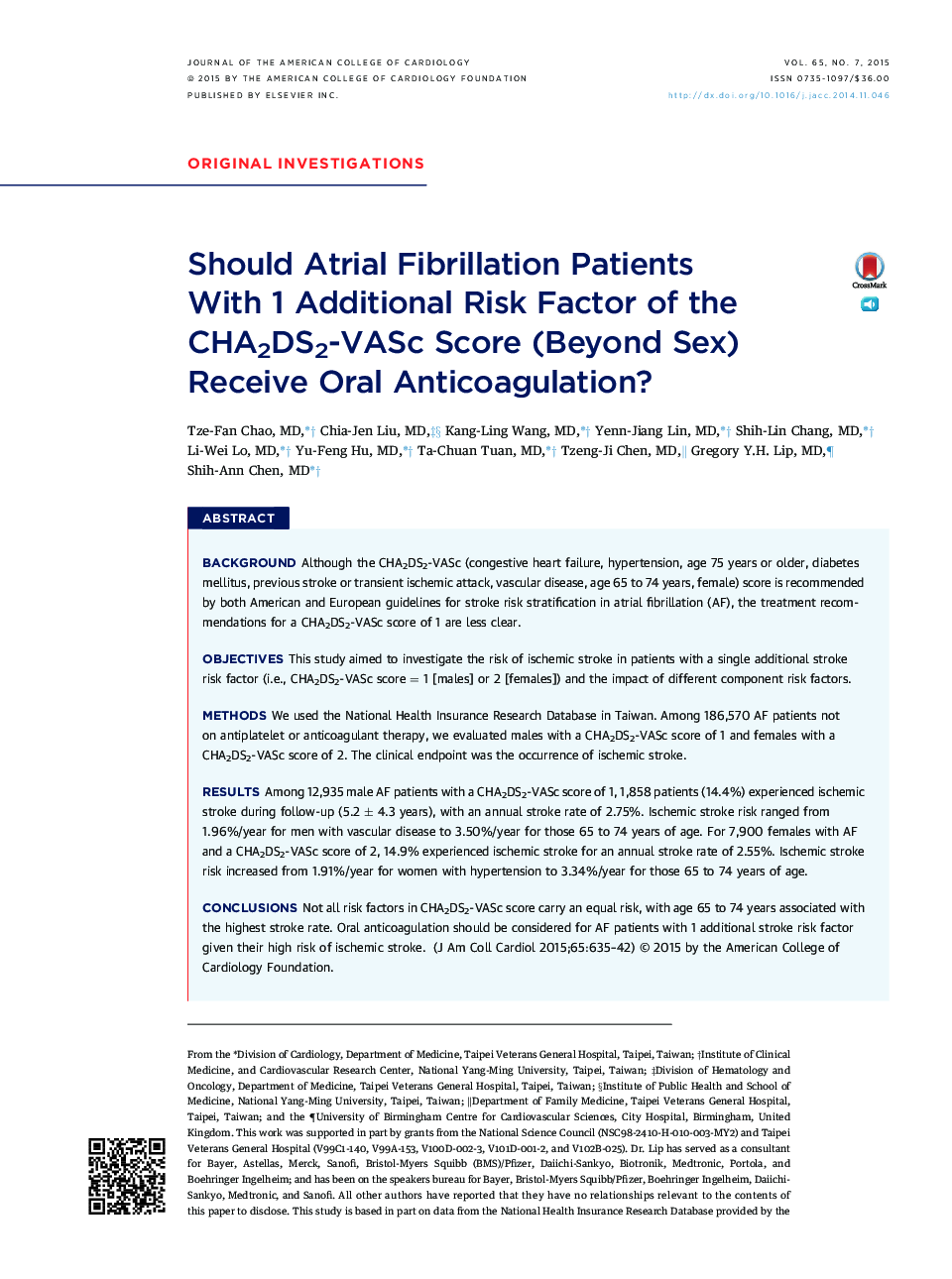| Article ID | Journal | Published Year | Pages | File Type |
|---|---|---|---|---|
| 2943747 | Journal of the American College of Cardiology | 2015 | 8 Pages |
BackgroundAlthough the CHA2DS2-VASc (congestive heart failure, hypertension, age 75 years or older, diabetes mellitus, previous stroke or transient ischemic attack, vascular disease, age 65 to 74 years, female) score is recommended by both American and European guidelines for stroke risk stratification in atrial fibrillation (AF), the treatment recommendations for a CHA2DS2-VASc score of 1 are less clear.ObjectivesThis study aimed to investigate the risk of ischemic stroke in patients with a single additional stroke risk factor (i.e., CHA2DS2-VASc score = 1 [males] or 2 [females]) and the impact of different component risk factors.MethodsWe used the National Health Insurance Research Database in Taiwan. Among 186,570 AF patients not on antiplatelet or anticoagulant therapy, we evaluated males with a CHA2DS2-VASc score of 1 and females with a CHA2DS2-VASc score of 2. The clinical endpoint was the occurrence of ischemic stroke.ResultsAmong 12,935 male AF patients with a CHA2DS2-VASc score of 1, 1,858 patients (14.4%) experienced ischemic stroke during follow-up (5.2 ± 4.3 years), with an annual stroke rate of 2.75%. Ischemic stroke risk ranged from 1.96%/year for men with vascular disease to 3.50%/year for those 65 to 74 years of age. For 7,900 females with AF and a CHA2DS2-VASc score of 2, 14.9% experienced ischemic stroke for an annual stroke rate of 2.55%. Ischemic stroke risk increased from 1.91%/year for women with hypertension to 3.34%/year for those 65 to 74 years of age.ConclusionsNot all risk factors in CHA2DS2-VASc score carry an equal risk, with age 65 to 74 years associated with the highest stroke rate. Oral anticoagulation should be considered for AF patients with 1 additional stroke risk factor given their high risk of ischemic stroke.
